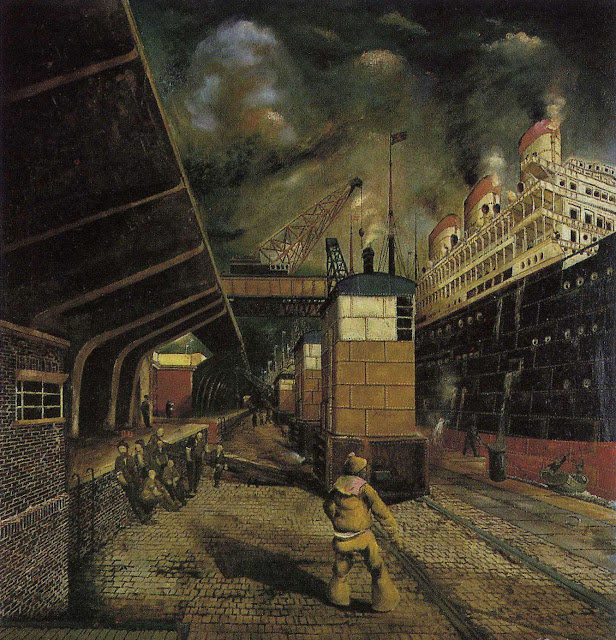I have looked into the art of the Weimar Republic
Verism has its origin in distant past when Roman portrait sculpture departed from idealized realism of Greek sculpture and insisted on great degree of individualization. Another words-it was art of the truth. In the 20’s in Germany
Albert Birkle
Karl Hubbuch
Rudolf Schlichter
Georg Grosz
Otto Dix
Gert Heinrich Wollheim
“Magic realism” in all instances speaks with personal voice and invites into paintings of private sphere, far from blood and semen of verism. It is often a mythology of the quotidian, everyday rituals elevated to an added significance by good painting craft. There is something elusive in their art, something like gladness and gentle peace overlaying the content of their paintings, as if message above all was of savoring the simple gifts laid at the feet of each day.
Balthasar Kłossowski de Rola known as Bathus
Franz Radziwill
Gregorio Sciltian
Antonio Donghi
Francois Emile Barraud
Georg Schrimpf
Franz Radziwill
Gregorio Sciltian
Antonio Donghi
Francois Emile Barraud
Georg Schrimpf
Works of surrealism are different from magic realism by purposeful nonsensical incongruity of content. Instead of poetical sense-making [Remedios Varo,Paul Delveau,Claude Verlinde] it confronts the viewer with the absurd [Dali,Magritte,Ernst,]. It would be wrong to think that surrealism enlarged the world of imagination because imaginary visions have their own sovereign logic and consistency, while surrealism depends on breaking away from any kind of sense-making. Surrealism is no less hostile to the entire tradition of our culture build on sense than abstract art. Both of these artistic movements reject the central idea of communicating some sentient content through a piece of art. Yet, paradoxically they claim a pride of place in every museum housing the very tradition they are shredding.
But these neat divisions are hardly accommodating figurative art employing imagination of the last 90 years that is not fitting into the above historical movements. There is something called “fantastical realism”, there is “metaphysical art”,” visionary art” and even “fantasy art”. One can come upon “metaphorical art” as attempt at classifying realistic works containing some poetical element. In cases I can think of it would just as well be called “magic realism’
Friedel Dethleffs-Edelmann
.And, neglected most, made by critics almost as quaint as oil-lamps is straight realism, deploying nothing fantastical, paradoxical, and surprising: just attentively, tenderly observed reality. Considering how utterly miraculous Reality really is it should suffice for the most shocking, revelatory content of them all.
Friedel Dethleffs-Edelmann
.And, neglected most, made by critics almost as quaint as oil-lamps is straight realism, deploying nothing fantastical, paradoxical, and surprising: just attentively, tenderly observed reality. Considering how utterly miraculous Reality really is it should suffice for the most shocking, revelatory content of them all.














Well done!
ReplyDelete